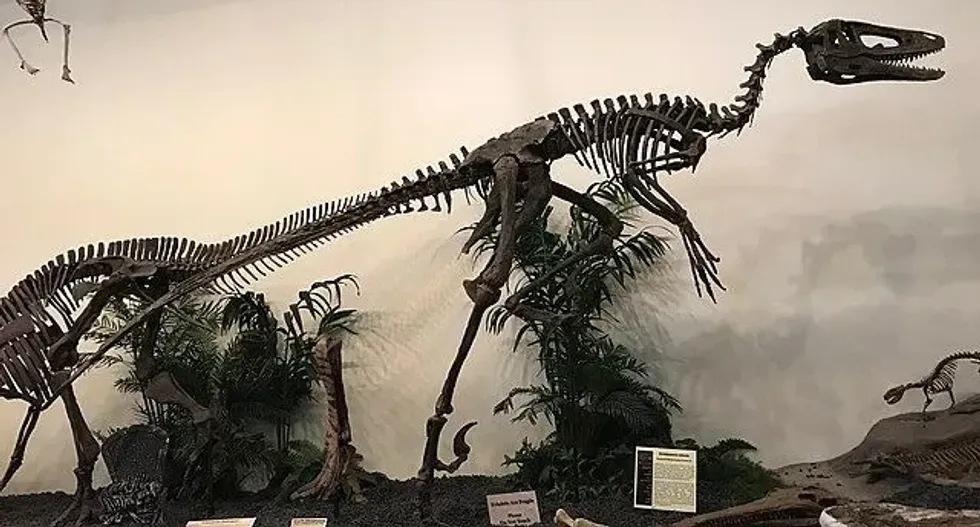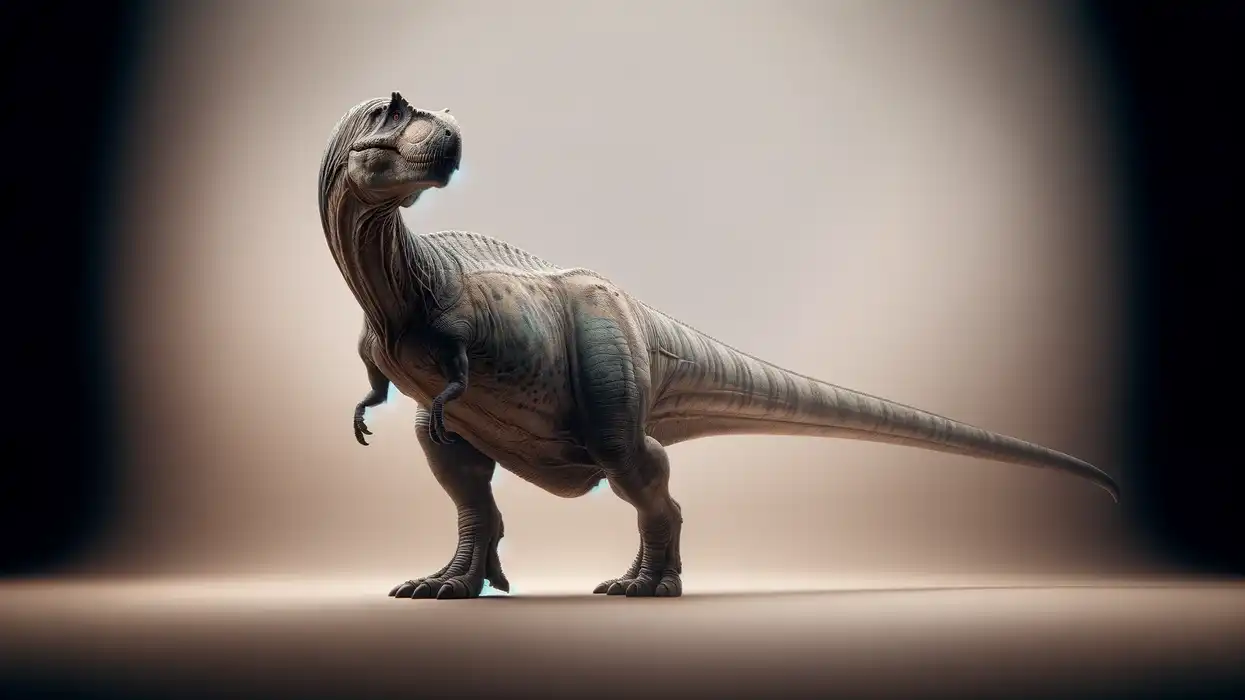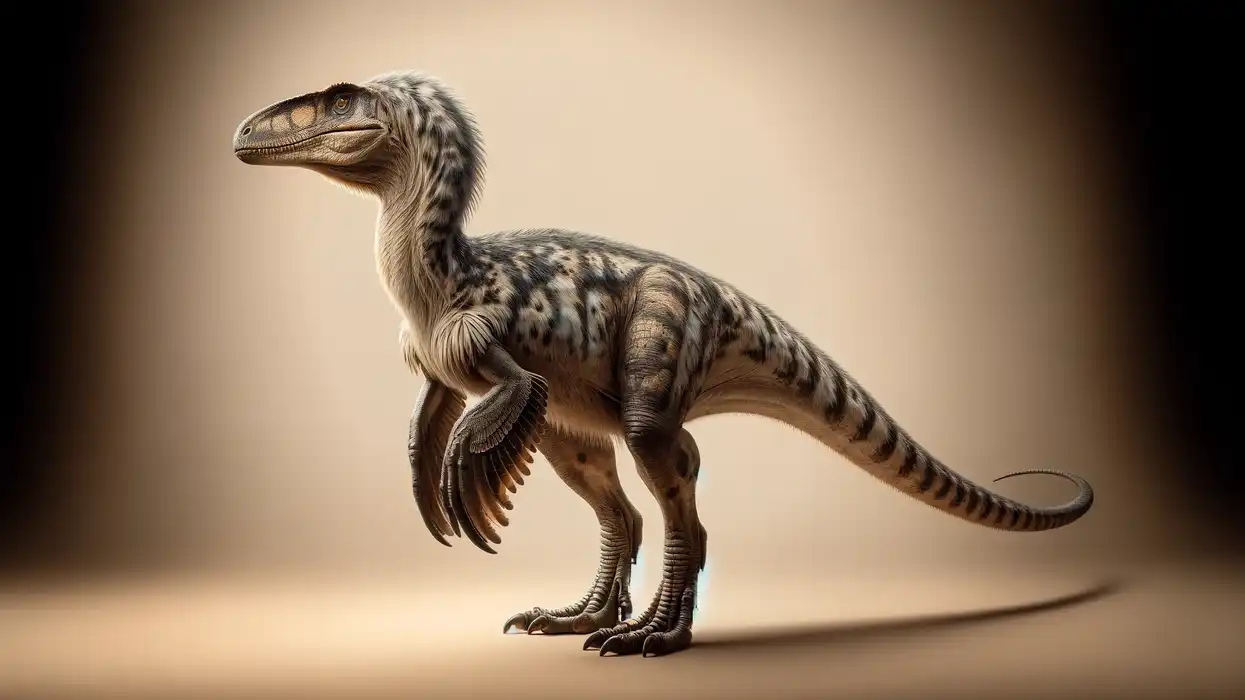Dakotaraptor was found by Robert DePalma. They were bigger than the average dromaeosaurids and lived on the continent of North America. They were ferocious meat-eaters who shared their habitat with the famous tyrannosaurus rex.
Their bone remains were found in South Dakota. They had long yet narrow skulls, long hollow vertebrae, lizard-like bodies, and long thin tails.
They had feathers on their body that seemed amazing. They were fast runners with an average speed between 30-40 mph (48.3-64.4 kph). Their claws and teeth were pointed and razor-sharp for easily killing their prey.
Now, this was just a small description. Ahead in the article, there are more interesting facts about this dinosaur that will make you amazed.
And for more relevant articles, do check our Camarasaurus facts and Torosaurus facts for kids.
Dakotaraptor Interesting Facts
How do you pronounce 'Dakotaraptor'?
Dakotaraptor pronunciation is one of the easiest. It is pronounced the way you see it, which is 'dak-o-ta-rap-tur'. Dakotaraptor were huge dromaeosaurid dinosaurs who inhabited the earth during the late cretaceous period. They were dinosaurs with feathers. They were carnivorous predator dinosaurs who inhabited the Earth around 70-66 million years ago.
What type of dinosaur was a Dakotaraptor?
Dakotaraptor were predator dinosaurs who were very much aggressive in nature. They had feathered bodies and small wings on their arms. They were huge dromaeosaurid dinosaurs who lived on Earth during the Late Cretaceous period. They belonged to the dinosaur clade Dinosauria, Saurischia, Theropoda, and Deinonychosauria.
They belonged to the family of Theropoda dinosaurs. Their genus name is Dakotaraptor and their scientific name is Dakotaraptor steini. These raptor species were comparatively bigger in size.
In which geological period did the Dakotaraptor roam the Earth?
The Dakotaraptor were dromaeosaurids who roamed the Earth during the later Cretaceous period around 70-66 million years ago. They were theropod species who had bodies like birds. These animals roamed around in North America and hunted on other herbivorous dinosaurs.
When did the Dakotaraptor become extinct?
Dakotaraptor fossils were found with other dinosaur remains in the Hell Creek Formation in North America. After doing research, it was said that these theropod dinosaurs were some of those who survived till the very end of the dinosaurian age. They were present on earth around 70-66 million years ago.
Where did a Dakotaraptor live?
As the name suggests, Dakotaraptor lived near Dakota in North America. Their fossil remains were found in South Dakota in the Hell Creek Formation. Thus we can assume that they lived in the continent of North America.
What was a Dakotaraptor's habitat?
Dakotaraptor was one of the huge dromaeosaurid dinosaurs who were land dwellers. They chased their prey on land and might have lived in forests.
Who did a Dakotaraptor live with?
Adult Dakotaraptors were large predators. Scientists who discovered them confirmed that they were either solitary or lived in very small groups. Most of the raptor species were solitary and showed a group feeding behavior.
How long did a Dakotaraptor live?
There is no information with proof for the Dakotaraptor's lifespan. Dakotaraptors, according to fossils, were one of the biggest raptor species who lived in North America.
How did they reproduce?
Dakotaraptors were reptiles who lived during the Late Cretaceous period. They roamed the continent of North America and their fossils were found in South Dakota. They were reptiles and we know that reptiles reproduce by laying eggs. We really don't know anything about their breeding season but what we know is that they were egg-laying lizards.
Dakotaraptor Fun Facts
What did a Dakotaraptor look like?

Dakotaraptors were theropods who lived in North America. They were present in this world during the later Cretaceous period around 70-66 million years ago.
Dakotaraptor's diet was mainly based on meat. Their skeleton indicates that they were the size of a fully grown man. Dakotaraptors were agile lizards who seemed like birds.
Dakotaraptors had feathers on their body and projection-like wings on their arms. They were bipedal animals who were theropods, which means had hollow bones for greater speed. They had a big narrow skull, lizard-like body, and a narrow tail.
Dakotaraptor skull was large and narrow. It had hollow spaces over the nose area and had razor-sharp teeth fitted inside their mouth.
Adults had used their sharp teeth for killing their prey. They had a long vertebrae ranging from their head to the tip of the tail.
After doing research on their fossil, it was seen that all the vertebrae bones were pneumatic in these raptors. That means it had hollow cavities for air storage. As they were theropods, they had three claws in all their feet and hands.
Each Dakotaraptor claw was pointed and sharp for building a better grip on their prey. Dakotaraptor feet were stronger and bigger than their hands. They had a really long whip-like tail which helped the animal in balancing while they moved.
These predator dinosaurs had feathers on their body. On their arms near the claws, there were small wings built and on the end part of their tail, there were also long feathers attached.
How many bones did a Dakotaraptor have?
At the discovery of Dakotaraptor, it was found with other dinosaurs. After claiming all its body parts, it was rebuilt and kept in Palm Beach Museum. Because of some missing pieces, it is impossible to tell how many bones these raptors actually had.
How did they communicate?
This is still a big mystery. The exact Dakotaraptor call is yet to be known. Maybe they had a screeching voice or maybe had a growling voice. Maybe they had a specific call for communication.
How big was a Dakotaraptor?
Dakotaraptors lived with Tyrannosaurus rex who ate herbivores like Triceratops. Dakotaraptor was huge for any dromaeosaurid dinosaur species. They had an average length of around 14.3-19.7 ft (4.4-6 m) and weighed around 485-771.6 lbs (220-350 kg). They were taller than humans, at more than 6.6 ft (2 m) tall.
How fast could a Dakotaraptor move?
Dakotaraptor's speed was around 30-40 mph (48.3-64.4 kph). Being theropods, they had pneumatic bones which gave them the ability to run fast.
How much did a Dakotaraptor weigh?
Dakotaraptor's fossils say that they were giant dromaeosaurids who predated on other herbivorous dinosaurs. They weighed around 485-771.6 lbs (220-350 kg).
What were the male and female names of the species?
There are no sex-specific names assigned to the males or females of this giant raptor species.
What would you call a baby Dakotaraptor?
Like all other baby dinosaurs, baby Dakotaraptors were also known as hatchlings.
What did they eat?
They were predators who ate other herbivorous dinosaurs present in their territory. While having a fight, Dakotaraptor's feathers would have saved them from severe injuries.
How aggressive were they?
Dakotaraptors were ferocious hunters of their time. So naturally, they would have shown aggressive behavior. They had the ability to run fast, this would have added to their aggressiveness.
Did you know...
The genus Dakotaraptor and the species steini were discovered in 2005 by paleontologist Robert DePalma. Robert DePalma found the remains in South Dakota.
Did Dakotaraptor hunt in packs?
There are few references present on that. Mostly it is assumed that Dakotaraptors were solitary hunters. But still, some people argue that they hunted in small groups.
Dakotaraptor vs. Utahraptor
This question is on Utahraptor vs Dakotaraptor. Now both of these raptors were some of the largest dromaeosaurid dinosaurs who were ferocious hunters. Both had similar body features but according to their holotype studies, Utahraptor was bigger than Dakotaraptor. Both these giant raptors had similar pneumatic bones, sharp claws, and razor-sharp teeth.
Here at Kidadl, we have carefully created lots of interesting family-friendly dinosaur facts for everyone to discover! Learn more about some other creatures from our Compsognathus fun facts or Ziapelta facts for kids.
You can even occupy yourself at home by coloring in one of our free printable Dakotaraptor coloring pages.
Main image by Emily Willoughby
Second image by ケラトプスユウタ









